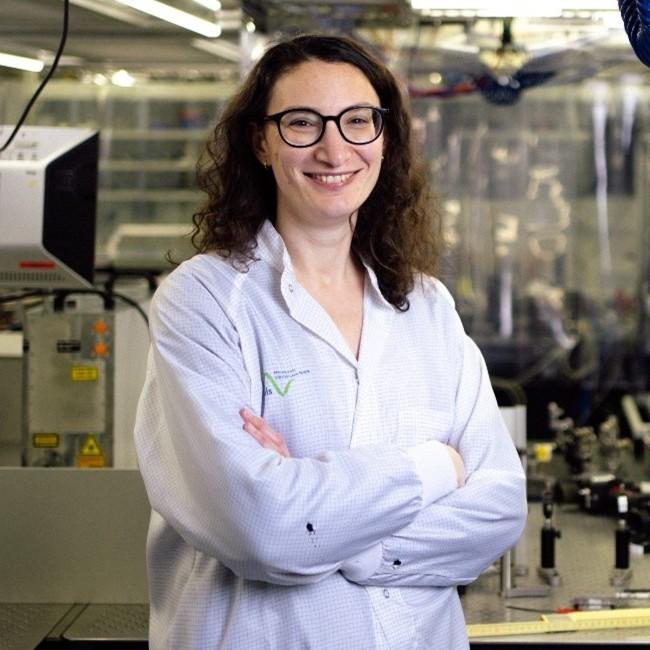Plenary Speakers
EOSAM features a distinguished lineup of speakers from diverse fields of optics. We are proud to announce the following plenaries have been confirmed for EOSAM 2025:
High-power ultrafast moves into the Terahertz
Ultrafast laser-driven broadband Terahertz light sources are nowadays ubiquitous tools in many scientific fields, enabling researchers to control and probe an immense variety of low energy phenomena in condensed matter and other systems. They are also being increasingly deployed in industrial settings for inspection and non destructive testing: THz waves "see through" optically opaque objects, and can provide rich spectroscopic information at a glance. While techniques to generate short, broadband THz pulses using ultrafast laser pulses and nonlinear conversion techniques have seen continuous performance progress in the last few years, their average power has traditionally moved comparatively slowly, which has prevented many of these fields from blooming. On the other hand, the increasing availability and enormous performance progress of ultrafast Ytterbium-based lasers providing multi-100-W to kilowatt average-power levels has opened up the area of high average power, laser-driven THz sources: recent results reaching average power levels in the THz domain approaching the watt-level, opening the door to a multiplicity of new and old research areas to be re-visited. We review recent progress in the generation of high-average power THz-pulses, current technological challenges in scaling THz average power, and applications areas that could potentially benefit from these novel sources.
About the Speaker
Clara Saraceno is a full professor at the Ruhr University Bochum, Germany. She was born in 1983 in Argentina. In 2007 she completed a Diploma in Engineering and an MSc at the Institut d’Optique Graduate School, Paris France. She first worked as an engineering trainee at Coherent Inc. Santa Clara, California, until 2008. She then completed a PhD in Physics at ETH Zürich in 2012 where she carried out research on high-power ultrafast disk lasers. From 2013-2014, she worked as a Postdoctoral Fellow at the University of Neuchatel and ETH Zürich, Switzerland, where she worked on high-flux XUV generation via high harmonics generation. In 2016, she received a Sofja Kovalevskaja Award of the Alexander von Humboldt Foundation and became Associate Professor of Photonics and Ultrafast Science in the Electrical Engineering Faculty at the Ruhr University Bochum, Germany, followed by a full professorship in the same university since 2020.
Prof. Saraceno’s research interests are in the development of high-power ultrafast laser systems and their application in driving secondary sources via nonlinear optics. One of her current main research areas is THz technology and spectroscopy, where her group aims to achieve high average power level broadband THz radiation.
She has received a number of prizes and awards including the ETH Medal for Outstanding PhD thesis (2013), the European Physical Society Quantum Electronics and Optics Division PhD prize in applied aspects (2013), the Sofja Kovalevskaja Award of the Alexander von Humboldt (2016), an ERC Starting Grant (2018), the SPIE Harold E. Edgerton Award for High-speed Optics (2024) and an ERC Consolidator Grant (2024). She was elected Fellow of Optica (formerly the Optical Society) in the 2022 class.
LinkedIn: Clara Saraceno
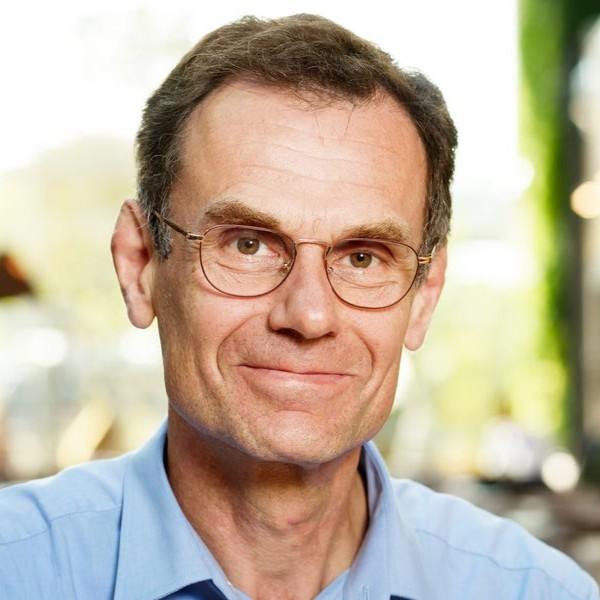
Arie den Boef
Corporate Fellow at ASML, Part-time full professor at Vrije Universiteit Amsterdam, Part-time group leader of the “Computational Imaging” group at ARCNL, The Netherlands
Digital Holographic Microscopy in overlay metrology for the semiconductor industry
Device density in semiconductor chips continues to increase through many innovations. For example, high-NA EUV lithography enables the printing of smaller features that allow more devices in a smaller area. In addition, many innovations are taking place in the area of 3D device integration where devices are stacked on each other.
Manufacturing state-of-the-art chips with sufficient yield requires good control of many process steps during manufacturing. Overlay, for example, is a critical parameter in chip manufacturing. Overlay describes the lateral mis-alignment between 2 overlapping layers in a device. Any misalignment (=overlay error) can result in significant yield loss and overlay must therefore be controlled to the 1 nm level. These levels of control need accurate and robust overlay metrology.
Overlay is often measured on dedicated targets using optical microscopy. However, robustly achieving sub-nanometer precision requires near-perfect microscopic imaging conditions which drives the need for high-quality imaging optics with very low aberration levels. Technically this is possible, but it leads to complex and costly optical imaging systems. In order to keep metrology costs to acceptable levels there is a need for a microscopy approach that achieves the sub-nanometer precision levels in a more cost-efficient way.
The ARCNL research institute is exploring Digital Holographic Microscopy (DHM) as a possible future option for overlay metrology. In our DHM concept we image an overlay target on a camera using low-cost high-NA optics with only a few lens elements. The resulting image is aberrated but DHM is able to computationally correct for aberrations and therefore offers near-perfect imaging in a cost-effective way.
This talk will present an overview of the status of our research on DHM. We will explain the underlying concept and present some first experimental data that demonstrate the potential benefit for overlay metrology. Moreover, we will also present potential solutions to some of the challenges that come with DHM like vibration sensitivity.
About the Speaker
Arie den Boef is a Corporate Fellow at ASML where he is involved in research on optical wafer metrology. He joined ASML in 1997 and since 2016 he is also a part-time full professor at the Vrije Universiteit in Amsterdam and a part-time group leader of the “Computational Imaging” group at the Advanced Research Center for Nano Lithography in Amsterdam (ARCNL).
From 1995 till 1997 he worked at Philips Optical Storage as a System Engineer for optical recording systems. From 1992-1995 he was at Philips Medical Systems working on Magnetic Resonance Imaging. Before joining Medical Systems Arie was at Philips Research Laboratories from 1979 – 1992 where he was involved in laser diode characterization and research on optical measurement systems for industrial inspection.
Arie received a B.Sc. degree in electrical engineering in 1985 from the Eindhoven Polytechnic Institute and a Ph.D. degree in 1991 from the department of Physics from the University of Twente, The Netherlands. The topic of his Ph.D. thesis was “Scanning Force Microscopy using Optical Interferometry”.
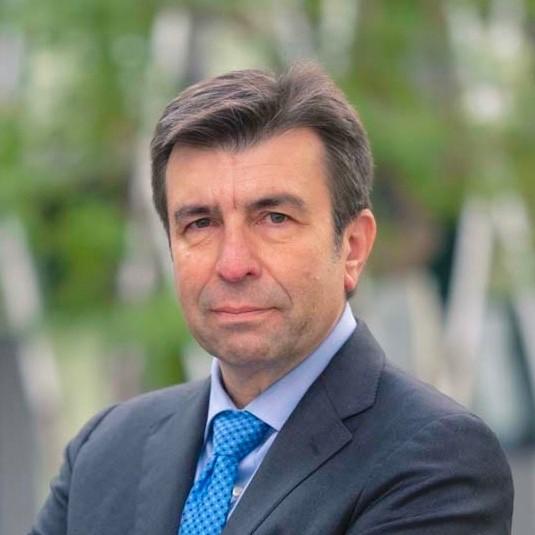
Pablo Artal
Full Professor of Optics at the University of Murcia, Spain
Two-photon infrared vision
Although human vision is traditionally confined to the visible spectrum, recent research has revealed that pulsed near-infrared (NIR) light can be perceived as visible due to two-photon absorption (TPA) in the photoreceptors. This nonlinear optical process enables infrared photons to effectively stimulating the visual pigments in a manner similar to conventional visible-light absorption. This expands our understanding of retinal physiology and opens new possibilities for both fundamental and applied vision research. In this presentation, I will discuss our recent investigations into TPA-mediated vision, including its impact on visual acuity and color perception. Our experimental studies demonstrate that visual resolution under TPA conditions is comparable to that of normal visible-light vision, achieved by scanning a pulsed NIR beam across the retina to form letter stimuli. Furthermore, our psychophysical experiments reveal that perceived hues shift predictably with increasing NIR wavelength (880 to 1100 nm) and radiant power (10 to 30 µW), transitioning from reddish-purple to blue, green, and yellow-green. These findings provide novel insights into the intensity-dependent interplay between single-photon (1P) and two-photon (2P) absorption processes in human vision. Beyond its fundamental implications, TPA vision presents exciting clinical and technological opportunities. It offers a potential method for retinal diagnostics that circumvents ocular opacities. Additionally, the development of TPA-based RGB displays could revolutionize display technologies. This presentation will provide an overview of our key findings, the methodologies employed, and the broader impact of TPA vision research and applications.
About the Speaker
Pablo Artal studied physics at the University of Zaragoza (Spain) and completed his PhD at the Instituto de Óptica (CSIC) in Madrid. He pursued postdoctoral research at Cambridge University (UK) and the Institut d’Optique in Orsay, France, before securing a permanent research position at the Instituto de Óptica. In 1994, he became the first full Professor of Optics at the University of Murcia, where he founded the Laboratorio de Óptica. His research focuses on the optics of the eye and retina, as well as the development of optical and electronic imaging techniques for vision, ophthalmology, and biomedicine. He has published over 400 peer-reviewed papers (h-index:87), holds more than 30 international patents, and has co-founded two spin-off companies. He has received numerous prestigious awards, including the Edwin H. Land Medal (2013), the King Jaime I Award in New Technologies (2015), the Spanish National Research Award “Juan de la Cierva” (2018), the Edgar D. Tillyer Award (2019), and the 2021 medal of the Spanish Royal Physics Society. A Fellow of Optica (OSA), ARVO, EOS, and SPIE, he continues to contribute significantly to both fundamental and applied optics.
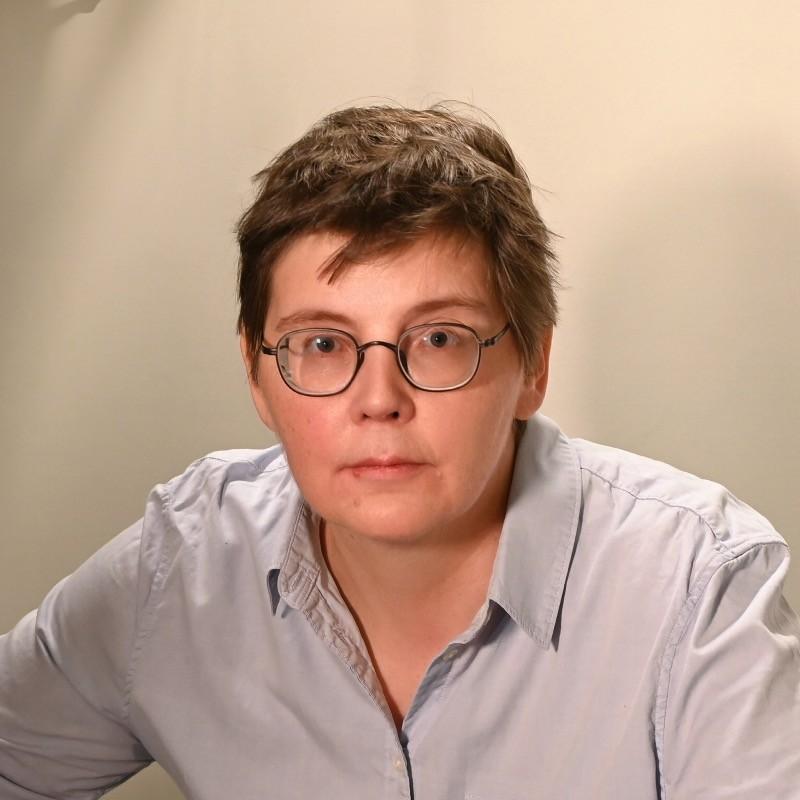
Nathalie Picqué
Director at the Max-Born Institute for Nonlinear Optics and Short Pulse Spectroscopy, Professor of Physics at the Humboldt University of Berlin, Germany
Frequency Comb Interferometry
Optical frequency combs have revolutionized time and frequency metrology by providing rulers in frequency space that measure large optical frequency differences and/or straightforwardly link microwave and optical frequencies. Such combs enable precision laser spectroscopy, tests of fundamental physics and provide the long-missing clockwork mechanism for optical clocks.
While frequency combs have become key to research areas such as attosecond science, or calibration of astronomical spectrographs, one of the most successful applications beyond their original purpose has been dual-comb interferometry. An interferometer can be formed using two frequency combs of slightly different line spacing. Dual-comb interferometers without moving parts are fundamentally different from any other type of interferometers: they perform direct frequency measurements, without geometric limitations to resolution. They outperform state-of-the-art devices in an increasing number of fields including spectroscopy and three-dimensional imaging, offering unique features such as frequency measurements, accuracy, precision, speed. This talk will provide a short introduction to optical frequency combs and will survey dual-comb interferometry and its latest exciting developments.
About the Speaker
Nathalie Picqué is a Director at the Max-Born Institute for Nonlinear Optics and Short Pulse Spectroscopy (Berlin, Germany) and a Professor of Physics at the Humboldt University of Berlin. She has been previously a research group leader at the Max-Planck Institute of Quantum Optics (Garching, Germany) and a research scientist with the Centre National de la Recherche Scientifique (CNRS) at Orsay (France). She received her doctoral degree in Physics from Université Paris-Saclay (France) in 1998. Her research interests are in the areas of optics and molecular physics, more particularly in interferometry, precision spectroscopy and laser technology. Her research focuses on exploring new ideas that involve laser frequency combs and on applying these novel concepts to metrology, molecular spectroscopy, holography and chip-scale sensing. Nathalie Picqué has received several awards, including the 2021 Gentner-Kastler Prize in Physics, the 2022 Breakthrough in Physical Sciences of the Falling-Walls Foundation and the 2024 William F. Meggers Award.

Monika Ritsch-Marte
Professor at the Medical University of Innsbruck, Director of the Institute of Biomedical Physics, Austria
Optical tomography of scattering samples by means of acoustofluidic actuation
Large cell clusters, such as organoids, cancer spheroids or developing embryos are often optically too opaque for imaging under illumination from only one side. Rotating or re-orienting the sample for multi-angle illumination is a solution to this problem, in the best case enabling 3D tomographic reconstruction of the refractive index distribution. Tailored optical and acoustic fields can exert controlled forces on microscopic biomedical samples in suspension in a non-contact way. Large and therefore heavy particles, however, can only be levitated by acoustic forces - optical tweezers could not handle them without adverse high-power effects. By tuning standing MHz ultrasound waves it is possible to rotate or re-orient a sample inside a micro-fluidic chamber around one or more chosen axes perpendicular to the optical imaging direction, thus avoiding the ‘missing-cone’ problem which commonly leads to artifacts. As examples, the 3D reconstruction of a levitated zebrafish larva by optical coherence tomography (OCT) and of cell clusters by optical diffraction tomography (ODT) will be presented.
About the Speaker
Monika Ritsch-Marte received her M.Sc. in Physics from the University of Innsbruck in 1984 and her PhD in Quantum Optics from the Waikato University in New Zealand (under the supervision of D.F. Walls) in 1988. After several PostDoc projects (Boulder/Colorado, Milano, Helsinki), and after completing her Habilitation at the Institute of Theoretical Physics in Innsbruck, she accepted the Chair of Biomedical Physics at the Medical University in Innsbruck in 1998 where she founded a Biomedical Optics group. Her research interest focuses on wavefront shaping, to advance holographic optical tweezers, digital holographic microscopy, linear and non-linear Raman microscopy and deep tissue imaging. She has received numerous research grants and awards, including an ERC Advanced Grant and the Boltzmann Award of the Austrian Physical Society and the Emmy Noether Award of the European Physical Society. She is a member of the Austrian Academy of Science, the German Academy Leopoldina, and a Fellow of the Optical Society of America.
Prof. Ritsch-Marte has published more than 140 peer-reviewed papers, she holds several patents. Her h-index is 55 (i10 index 118) according to google scholar (January 2024).
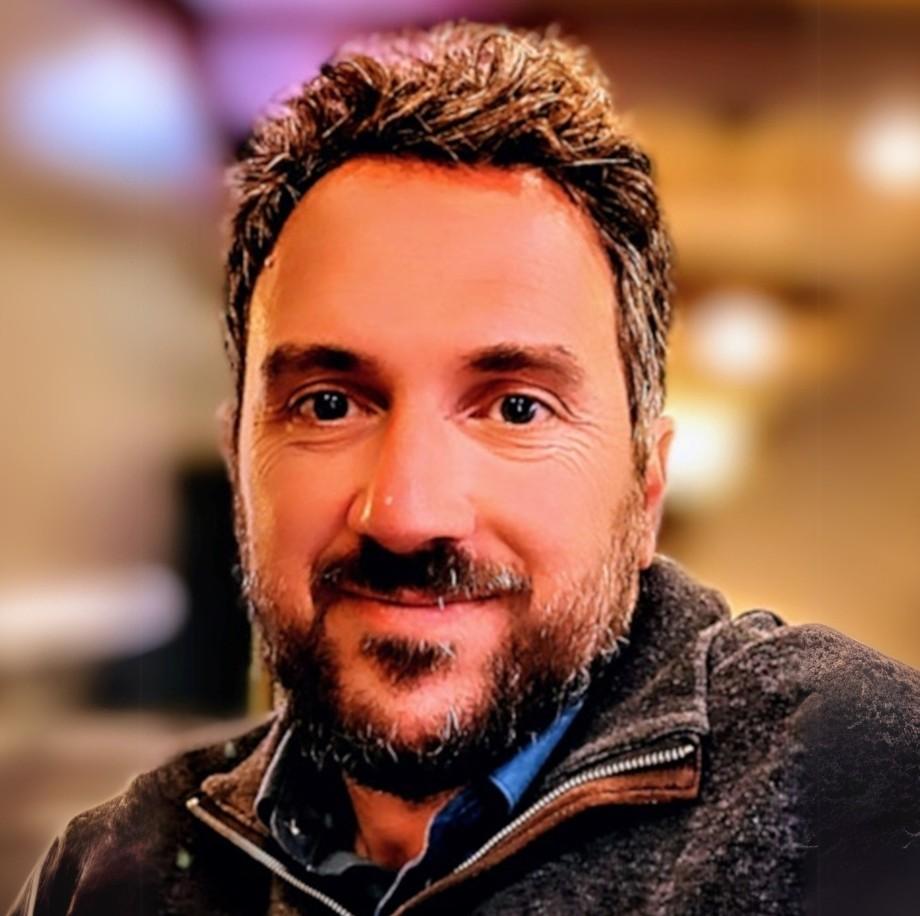
Francesco Poletti
Partner Researcher at Microsoft Azure, Professor at the University of Southampton, United Kingdom
Hollow core fibres: when less is more
For decades, hollow core fibres have been a fascinating tool for scientists, enabling long distance light guidance in any gas, as well as innovative experiments exploiting the long light:gas interaction length. For a long time, their optical performance fell much shorter than the requirements of optical communications. Recently though, thanks to nested antiresonant designs, the loss of these fibres has reached lower values than fundamentally achievable in conventional glass-guiding telecoms fibres, opening exploitation opportunities in data-transmission systems. This, added to negligible nonlinearity, very high damage threshold and ultimately low latency, has dramatically increased global interest in the technology for numerous applications involving the transmission and delivery of light. While there are still substantial challenges to be solved before they can achieve widespread commercialization, it is hard to believe that hollow core fibres will not find an application in the optical communication networks of the future. In this talk we will review state-of-the-art, opportunities and challenges of the hollow core fibre technology.
About the Speaker
Prof Francesco Poletti is one of the pioneers of hollow core fibre technology. He leads the Hollow Core Fibre (HCF) group at the ORC, University of Southampton, as well as the research activities on HCFs for optical data communications at Microsoft Azure FIber. He has co-authored more than 500 peer-reviewed publications and over 20 patents in the area of fiber optics, amongst which seminal works introducing the nested antiresonant nodeless HCF concept (NANF) and using it to demonstrate lower loss than fundamentally possible with silica fibres in the near-infrared. He held research fellowships from the Royal Society and the ERC. His pioneering work on HCFs led to the creation of the ORC startup Lumenisity, which in 2022 was acquired by Microsoft Azure, where he is currently Partner Researcher.
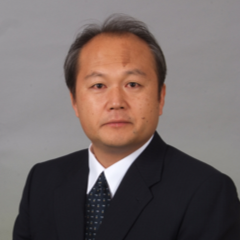
Yoshimasa Kawata
Professor at Shizuoka University, Japan
EOS Partner Society, Optical Society of Japan (OSJ), Presents:
Electron-beam excitation assisted optical microscopy for high resolution bio-imaging and cell stimulation
Yoshimasa Kawata and Wataru Inami
High-resolution imaging of cellular structures, such as actin filaments, mitochondria, and nuclei, is essential for the detailed analysis of cellular functions, including motility, organelle transport, and energy production. However, conventional optical microscopy is fundamentally limited by the diffraction limit, making it challenging to resolve fine subcellular details. To uncover previously unrecognized mechanisms underlying cellular processes, imaging techniques with enhanced spatial resolution are required.
In this study, we present the development of a direct point electron beam irradiation system designed to probe the biological functions of subcellular domains within living cells. Our system enables selective irradiation of subcellular structures in individual living cells cultured on a thin film substrate using a finely focused electron beam.
We have developed an electron-beam excitation-assisted optical (EXA) microscope capable of label-free, high-resolution imaging. In this system, a cathodoluminescent (CL) light source is generated in a luminescent thin film upon irradiation by an electron beam. The EXA microscope achieves super-resolution imaging by raster scanning the CL light source, which has a spot diameter of only a few tens of nanometers—well below the diffraction limit.
About the Speaker
Yoshimasa Kawata is Professor (Research Institute of Electronics) at Shizuoka University. He obtained the B. Eng, M. Eng, and Ph.D. in Engineer in 1987, 1989, and 1992, respectively, from Osaka University. After working as an assistant professor at the Faculty of Engineering, Osaka University, he joined Shizuoka University as an Associate professor in 1997 and was promoted to a full professor in 2005. He has been working on the research interests include laser microscopy, 3D imaging optics, photorefractive optics, 3D optical memory, and nonlinear optics. He also demonstrated electron-beam excited assist optical (EXA) microscope for high resolution bio-imaging.
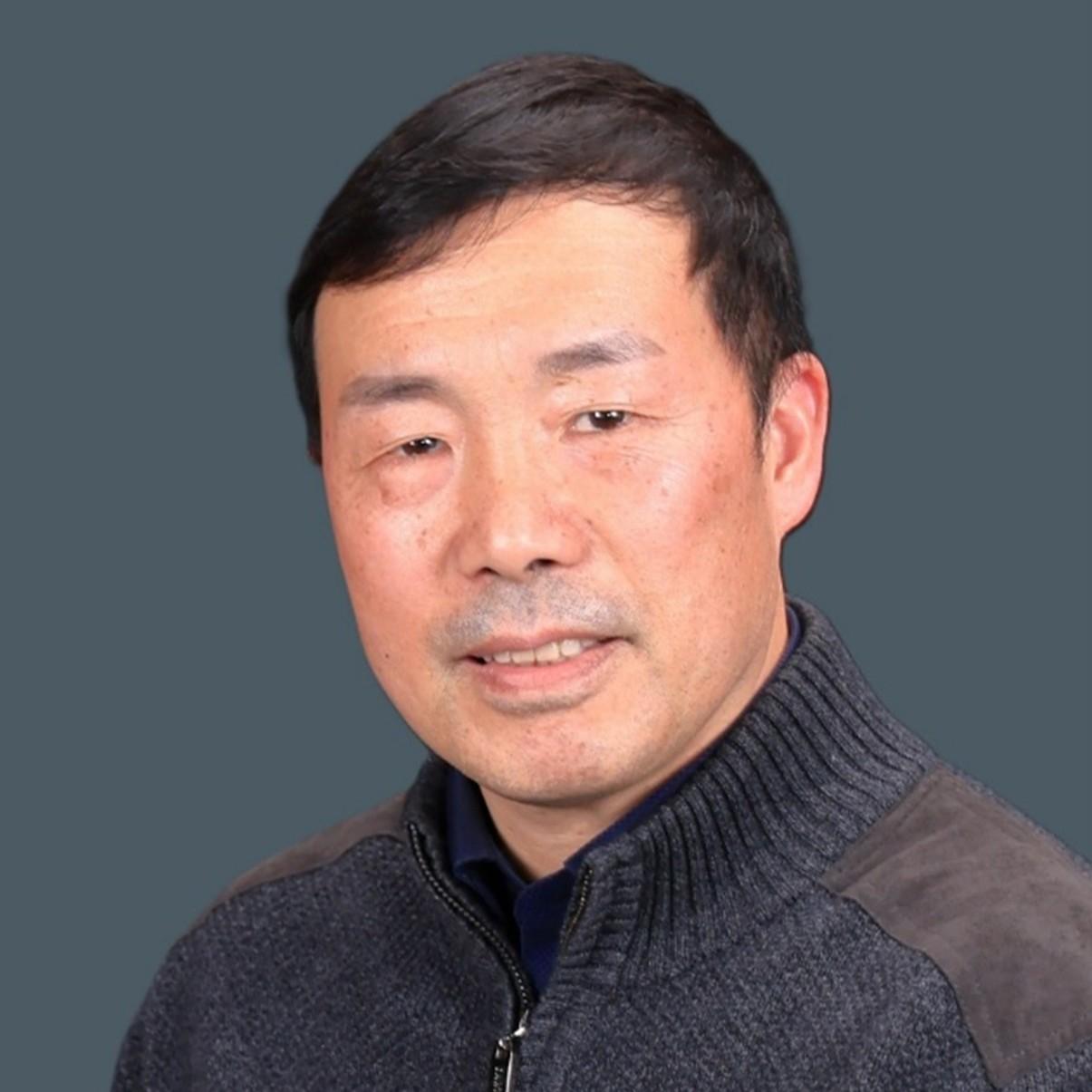
Xu Liu
Professor at Zhejiang University, China
EOS Partner Society, Chinese Optical Society (COS), Presents:
High quality multifunctional dynamic imaging through one multimode fiber
When an image coupling into one multimode fiber, and propagates through a long distance, along the multimode fiber, especially when the fiber is hold by hand and moving, It will be overwhelmed due to the dynamic coupling between complex modes. We propose a method that can overcome the complex coupling between different modes of a multimode fiber during motion and achieve accurate imaging through the fiber, so that a multimode fiber can act as a very thin long distance lensless high quality imager. We have used this method to construct the finest endoscopic imaging system (about 0.1mm), while utilizing various optical encodings and decoding technique to achieve multifunctional imaging of intensity, phase, 3D, super-resolution, and fluorescence using a single fiber. It means that with Al technique and special coding, an optical system imaging ability just depends on the amount of information that the system can transmit, but not on the classic imaging plane to plane mapping relationship. The applications of this finest endoscope will be presented.
About the Speaker
Liu Xu is a Yangtze River Scholars professor at the School of Optoelectronics Science and Engineering, Zhejiang University. The current director of the National State Key Laboratory of Extreme Optics Technology and Instruments.
In July 1990, he obtained a French PhD in Science from the University of Aix Marseille III in France, and began working at the Department of Optical Engineering at Zhejiang University in 1990. His researches focus on thin film optics and technology, 3D display, optical imaging, and super resolution techniques. He is the author or co-author of more than 310 journal papers, and 110 patents. His research achievements in thin film optics,projection display and super resolution microscopy have won the National Natural Science Award,National Science and Technology Progress Award,and the National Invention Award respectively. He is the Chief Scientist of the National 973 Program, a Fellow of the Chinese Optical Society, a Fellow of the Optical Society of America (OSA), and a Fellow of the International Optical Society (SPIE). Convener of the Discipline of Optical Engineering of the Academic Degrees Committee of the State Council, Chairman of the Sub-committee of the Teaching Steering Committee for Optoelectronic Information Engineering Majors in Higher Education of the Ministry of Education. General secretary of COS.

